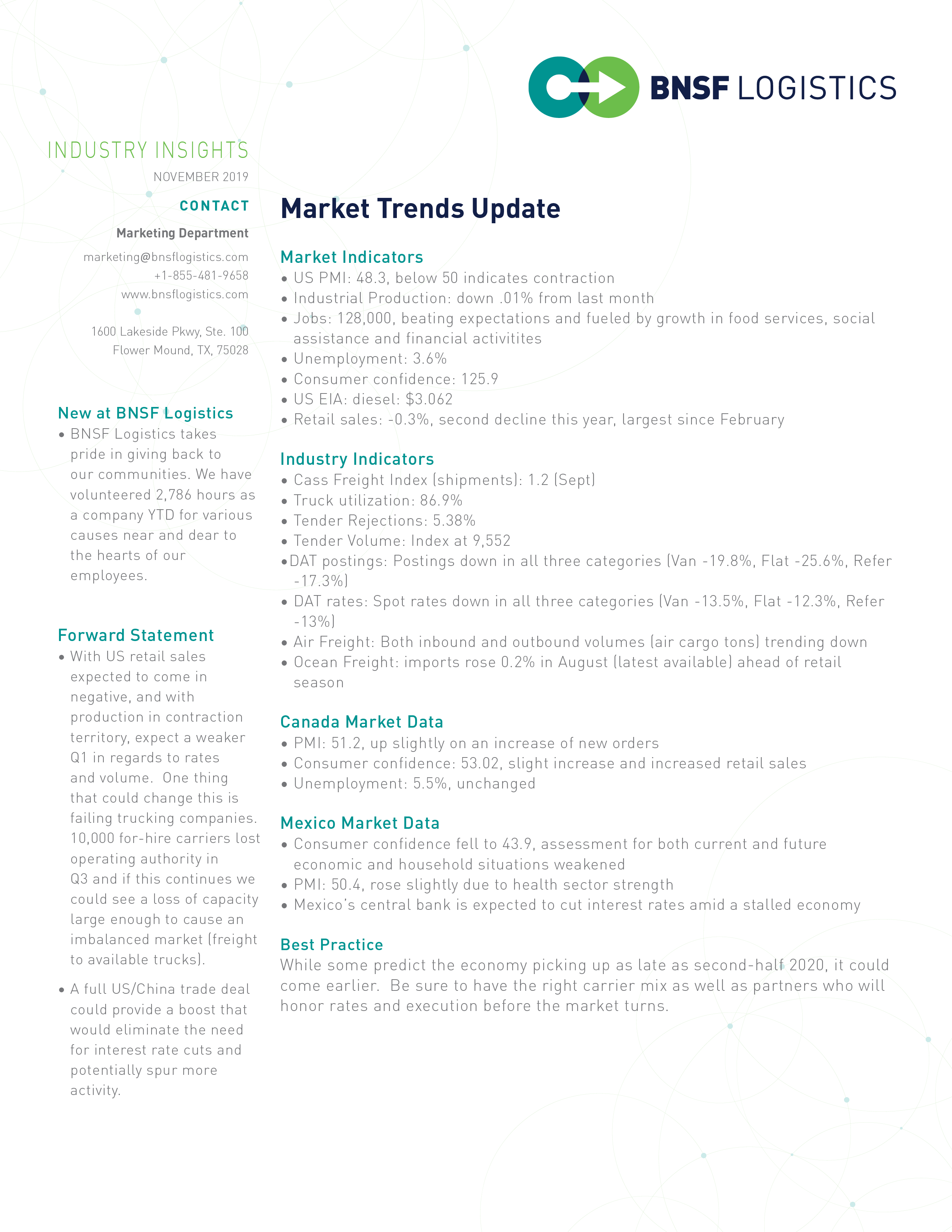 Jeff Greenwell, Managing Director of Strategic Account Management, focuses this month's look at the transportation industry "Market Update" on how carriers are affected by the changing economy.
Jeff Greenwell, Managing Director of Strategic Account Management, focuses this month's look at the transportation industry "Market Update" on how carriers are affected by the changing economy.
MARKET INDICATORS | Contraction for the 3rd month in a row
October saw the largest decrease in industrial production in three years based on manufacturing and utilities. The job market is beating expectation, with the biggest gains coming from the food services industry (not a big surprise over the holidays).
There is progress being made on the U.S./China trade deal with talks regarding phase one details scheduled to resume today. The hope is to have an agreement by December 15th, and the discussion of this agreement has sent stock market up as a result.
HOW DO MARKET FACTORS AFFECT CARRIERS?
A record number of 10,000 for-hire carriers lost operating authority in Q3, and a number of economic factors are playing in to this phenomenon, including:
Trucking Insurance - The Federal Motor Carrier Safety Administration (FMCSA) requires that owner-operators have primary liability (PL) insurance, with rates depending on a number of factors, including equipment value, geographic areas of operation, and the type of commodities hauled. Outside of PL, carriers likely need to purchase additional insurance coverage to maintain a certain level of security in the operation of their business, which is getting harder with insurance premiums increasing and insurance companies moving away from providing trucking insurance. This compression in the amount of available providers, as well as, rising costs is probably the number one reason why trucking companies are going out of business.
Trucker Wages - The transportation boom of 2018 with high spot rates and plenty of freight waiting to be moved, coupled with a significant driver shortage, urged trucking companies to increase pay and benefits. 2019 capacity hasn't kept up, and the higher than normal pay increase has taken a big toll on owner-operators in their efforts to stay afloat.
However, there may be some hope. Some are predicting the economy to pick up as late as the second half of 2020. If the U.S. is able to cut a trade deal with China, we should see that spur more activity as the world economy picks up. Shippers should make sure they have the right carrier mix and partners who will honor rates and execute before the market turns. In a tight capacity market, when budgets are restricted and costs go through the roof, are the rates you're promised realistic and will those rates actually allow carriers to haul freight throughout the economic crunch? Can those carriers ensure that the capacity is going to be there if/when things turn?
BNSF Logistics suppliers and service providers prosper in an environment with consistent freight volume, competitive market rates, and prompt payment for the services they provide. Together, we offer sustainable supply chain solutions that effectively balance environmental impact, financial objectives, and customer service requirements.






 Blog Home
Blog Home